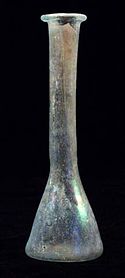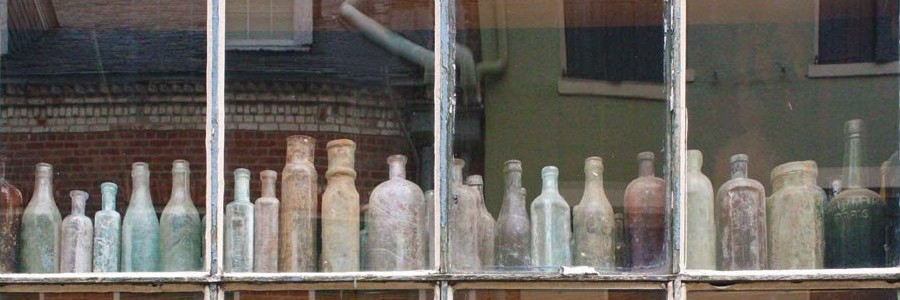Poets like to sing about things in bottles. Jim Croce pined after time in a bottle, Audra Mae claimed a recipe for lightning in a bottle and Sting sent an SOS to the world … in a bottle. Although not as celebrated, the biblical Psalmist joins this chorus and sings of tears in a bottle in Psalms 56:8 (NLT):
“You keep track of all my sorrows. You have collected all my tears in your bottle. You have recorded each one in your book.”
The common explanation for this odd reference in Psalms to putting tears in a bottle relies on a practice known from the biblical world involving mourners filling small glass bottles with their tears (called “lacrymatories,” after the lacrymatory glands that secrete our tears) and placing them in the burial tombs of loved ones, along with other bottles or jars filled with unguents (called”unguentaria”) among objects associated with, treasured by, or given to, the deceased. Whether professional mourners, whose livelihood depended on their ample tears, invented this practice by using such bottles to demonstrate their productivity, is unknown. When I give tours of Emory’s Carlos Museum, patrons are always fascinated by the ancient glassware in our collection, awestruck at its beauty, crafstmanship and obstinate will to survive over the centuries. I usually mention this verse from Psalms and it strikes a chord of sympathy with visitors, but whether any ancient bottle was used specifically for the collection of tears is difficult to say, and it’s possible that our sentimental notions about them overrule our scarce textual and archaeological data.
 The ancient mourning practice of using tear bottles might elucidate another narrative from the Bible, the endearing story in Luke 7:37-38 (NASB) in which a woman (possibly Mary) washes the feet of Jesus with the locks of her hair and her tears, an act of startling intimacy, a stunt that might approach a performance-art level of theatricality and creativity if not for her evident sincerity:
The ancient mourning practice of using tear bottles might elucidate another narrative from the Bible, the endearing story in Luke 7:37-38 (NASB) in which a woman (possibly Mary) washes the feet of Jesus with the locks of her hair and her tears, an act of startling intimacy, a stunt that might approach a performance-art level of theatricality and creativity if not for her evident sincerity:“And there was a woman in the city who was a sinner; and when she learned that [Jesus] was reclining at the table in the Pharisee’s house, she brought an alabaster vial of perfume, and standing behind Him at His feet, weeping, she began to wet His feet with her tears, and kept wiping them with the hair of her head, and kissing His feet and anointing them with the perfume.”
While the plain reading of this text, as illustrated by Dieric Bouts in his painting Christ in the House of Simon inserted below, is more than sufficient to account for its literary and theological impact, it’s possible that the reader encountering this story at the time of Mark would have visualized a female mourner using not only a jar of unguents but also holding a bottle collecting her own tears as she symbolically prepared Jesus for his burial. Incidentally, I’ve always been intrigued by Mark adding at the end of this narrative a prediction on the lips of Jesus that this event will always be recounted by His disciples in memory of this uninhibited woman, a prediction proved true by Mark’s nod at his intentional inclusion of this very text in his own gospel, followed, perhaps, by an ironic wink when Mark is either unwilling or unable to come up with her name.
The Psalmist’s conceit of God filling a lacrymatory with His own tears, and oddly enough, pouring in ours as well at the Psalmist’s request, captures my spiritual imagination. I’m pleased that God him/herself might follow the admonitions of Paul (Romans 12:15) and Alma (Mosiah 18:9) and mourn with those that mourn, and sit with us on the mourner’s bench. That is the message in this bottle.


